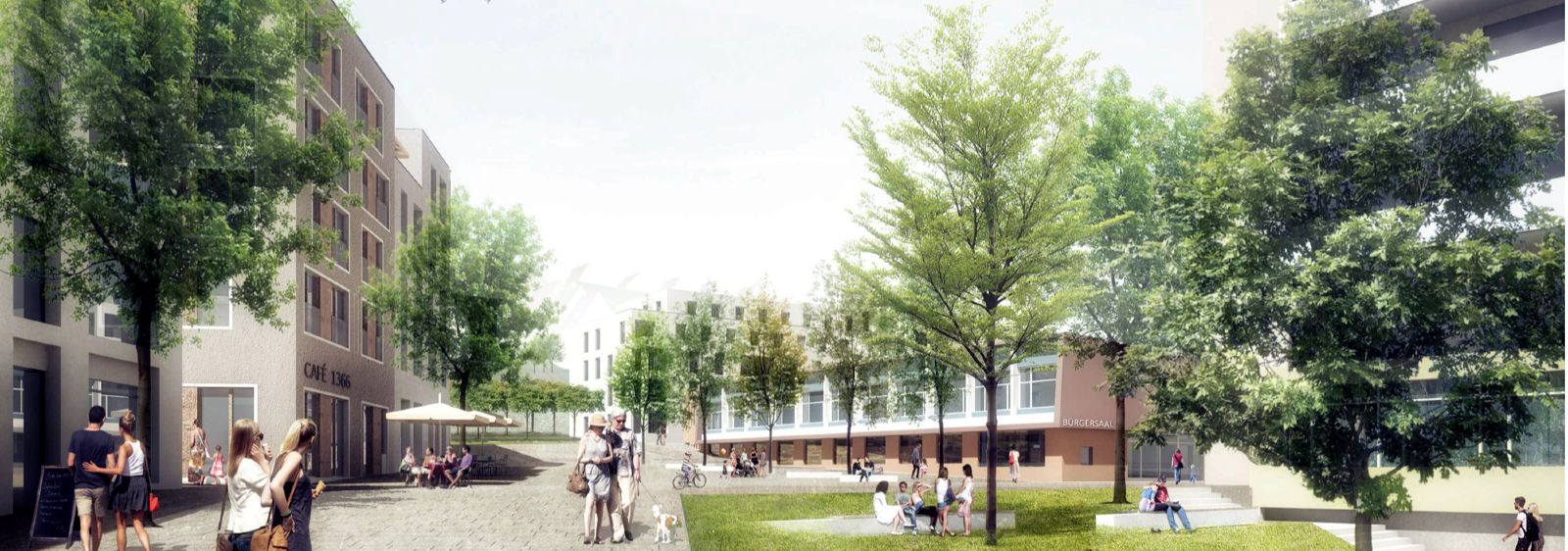
Monitoring of heat network operation
Heat supply of a district – solar-active and grid-connected
Since autumn 2016, a new passive-house standard residential district has been under construction at the science and technology location Berlin Adlershof. Its connection on the recirculation to the existing district heating network with feed-in of the solar heat generated is the subject of extensive investigations. The aim is to achieve the highest possible coverage of solar heat and electricity requirements. Initial results were presented at this year's Berlin Energy Days.
The Newton project Berlin-Adlershof is dedicated to the monitoring and subsequent operational optimisation of a solar heat and electricity supply of residential buildings in passive house standard with district heating connection at the recirculation. The first construction phase comprises three four-storey residential buildings with 38 residential units and approx. 3,000 m2 of living space, built to passive house standard. The system concept is based on the highest possible heat requirement coverage by solar thermal energy and the highest possible electricity requirement coverage by photovoltaics. The researchers at the Ostfalia University of Applied Sciences in Wolfenbüttel determined final energy requirements and building loads.
New goal KfW-40 Plus efficiency standard
For the energy concept of the district, the scientists examined various variants of central and decentralised supply already in the planning phase. At that time, the goal was still "achieving a plus-energy standard". But after evaluating the variants examined, it was clear that the efficiency standard of the KfW Efficiency House 40 Plus makes economic sense and can be realistically implemented. House 1 will now be equipped with roof and facade PV systems, House 2 will receive a solar thermal system and the technical centre. And on House 3, which has since been occupied, a PV system is in operation on the roof. The first consumption measurements have already been carried out in this building and a yield forecast has been prepared for all PV systems.
Renewable district heating with optimised balance sheet
In combination with solar thermal heat supply, the option of grid feed-in and grid connection represents an interesting solution in terms of energy and economy. The current focus of work is therefore the implementation of an energy concept for "balance sheet-optimised district heating". It mainly comprises the purchase of local and district heating and the supply of solar heat through the recirculation to the existing BTB network, but also the construction of a residential local heating network with bidirectional heat transfer (supply and discharge). The operation of an integrated air/water heat pump, building ventilation with heat recovery, photovoltaic systems and battery storage are also being investigated. Monitoring of the entire plant has begun. The complete measurement results are expected in 2019.
New calculation model
Together with the operator of the district heating network in Adlershof, BTB Blockheizkraftwerks- Träger- und Betreibergesellschaft Berlin, a calculation model was developed concerning the feed-in of solar heat generated in the district compared to the district heating obtained from the network. Although BTB's grid and generation plants are characterized by very good primary energy factors, this cooperation was a strategic decision for BTB. The motive: to win investors as future customers and to offer the district heating network as a virtual storage facility.
Further information on the Newton project Berlin Adlershof can be found on the detailed project presentation on the website Energiewendebauen.

